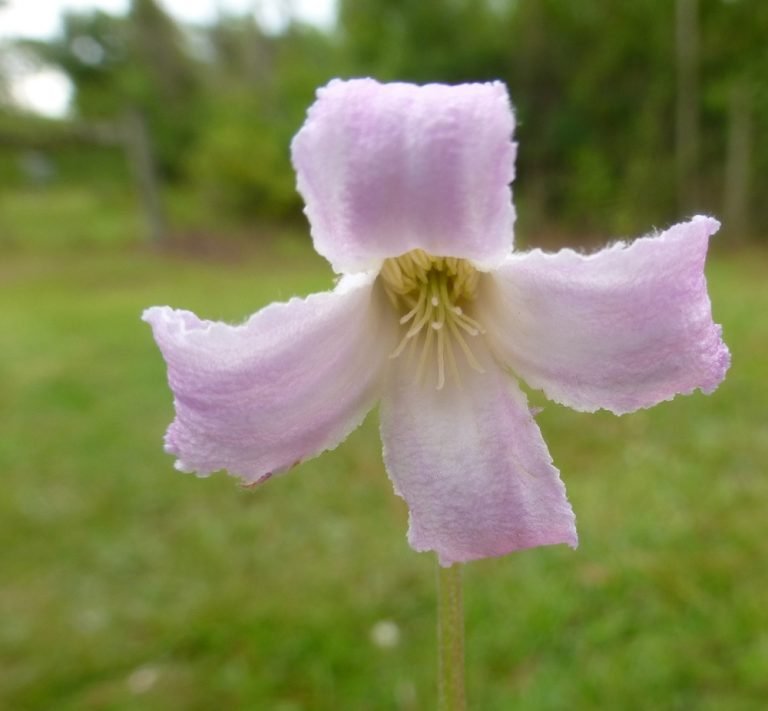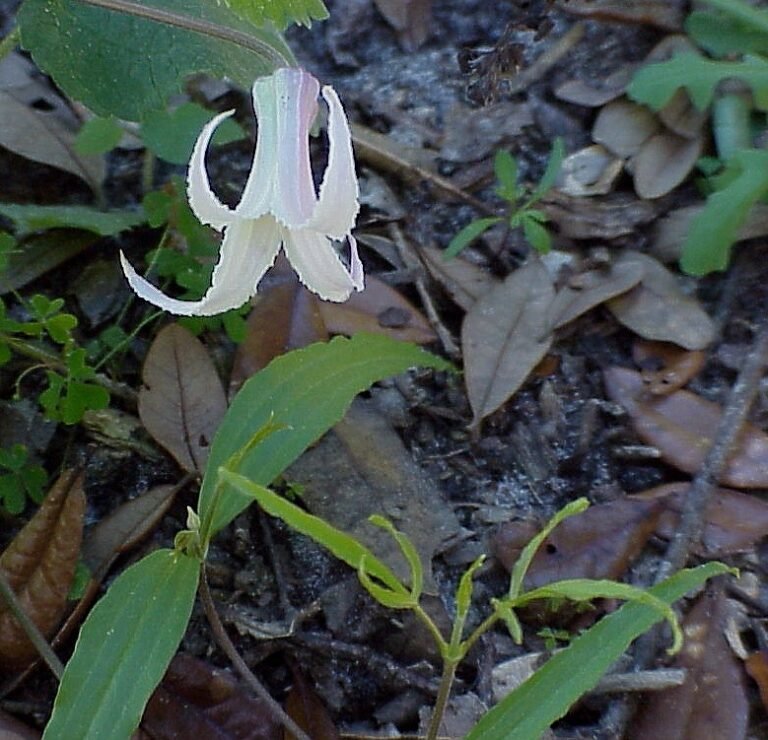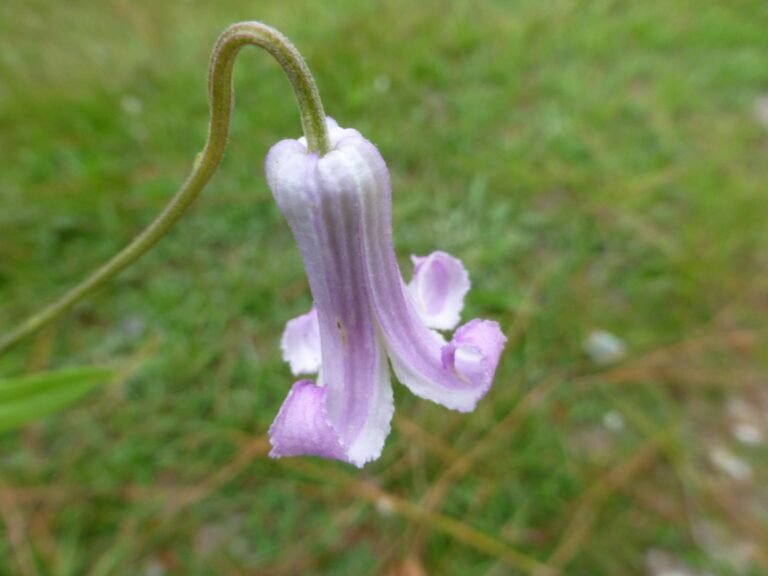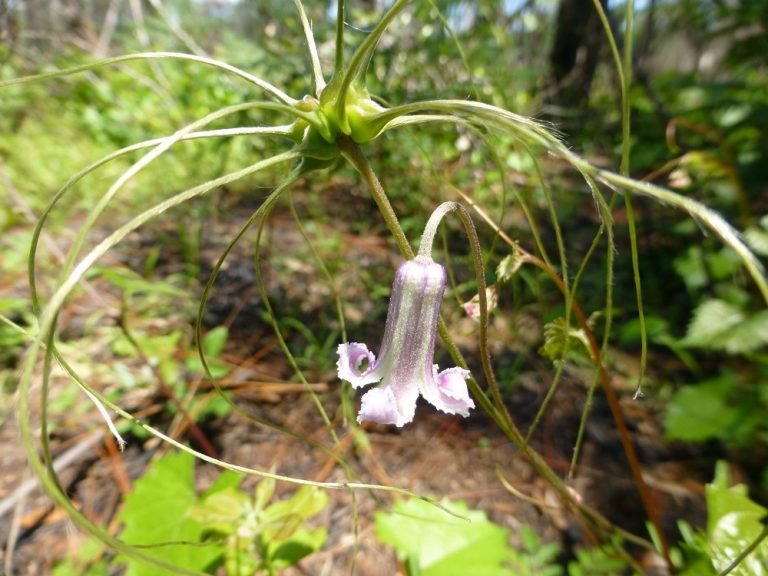Clematis baldwinii
(Pine-hyacinth)

Common Name, Latin Name, and Family
Other common names include flatwood clematis and pinewoods clematis.
The Latin name is Clematis baldwinii.
Pine-hyacinth is in the Ranunculaceae, or buttercup, family.
Form
A perennial, endemic, wildflower that barely reaches a height of 20 inches.
Leaves
Pine-hyacinth leaves are opposite, lanceolate to elliptic in shape with entire margins.
Some may be lobed or unlobed.

Flowers
The flowers are pale purple and bell shaped.
The flowers appear throughout the year.

Fruit / Seeds
Once the flowers are pollinated, the seed heads make quite a showing as well.
They are globular and fuzzy and the seed is at the base of the pappus (or fluffy bit) which is much longer on this plant than Clematis reticulata. The pappus, as in dandelion seeds, helps the wind disperse the seeds.
When growing, or storing, the seeds it is best to remove the pappus because it can hold in moisture or insects so it’s best to break that off.

Habitat
Dry pinelands, and other dry areas with sandy soil.
Native Range
In Florida it is naturally occurring from St. John’s County southward into the Keys.
Landscape Use
In the home landscape it grows in part shade with average moisture. It is best planted in a natural area with other wildflowers because it is a tiny wildflower and can go unnoticed when not in bloom so it is best to have it interplanted.
Wildlife Use
Bees use the flowers as a nectar source and small mammals and birds eat the seeds and flower buds.
The pappuses, or fluffy tails, are used for nesting material by mice and birds.
Propagation
It is very fragile, but it may be possible to find the root and transplant it. I suggest digging down next to the plant and locating the roots from the side so as not to damage them.
Any portion of it above ground is very fragile and will break very easily, but it will come back from the roots quickly enough. If you can only transplant the roots be sure to label it and water until you see new growth.
